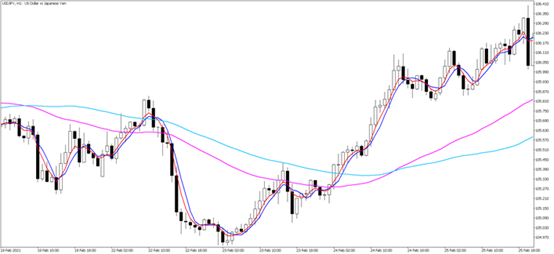Unlocking simple technical analysis by understanding the key differences between simple moving averages (SMA) and weighted moving average (WMA) in financial analysis.
Weighted Moving Average (WMA) and Simple Moving Average (SMA)
The Simple Moving Average (SMA) is a technical indicator that calculates the average closing price over a specified number of periods. A key characteristic of the SMA is that it assigns equal weight to each trading day within the selected period. This means that the most recent closing price and the closing price from n days ago are treated equally in the calculation. For instance, in a 75-day moving average, the closing price from three months ago has the same impact as today's closing price.
However, because the SMA is not particularly responsive to recent price changes, the Weighted Moving Average (WMA) was developed as an alternative. The WMA assigns greater weight to more recent prices, making it more sensitive to short-term price movements compared to the SMA. This approach emphasizes the importance of recent data, enhancing the indicator's responsiveness.
Additionally, MT5 trading platforms feature a Linear Weighted Moving Average (LWMA), which is another variation designed to give more significance to recent prices.
| Simple Moving Average=(Closing price 5 days ago + Closing price 4 days ago + Closing price 3 days ago + Closing price 2 days ago + Closing price 1 day ago) ÷ 5 |
|---|
| Weighted Moving Average=(Closing price 5 days ago × 1 + Closing price 4 days ago × 2 + Closing price 3 days ago × 3 + Closing price 2 days ago × 4 + Closing price 1 day ago × 5) ÷ 15 |
Increased responsiveness and sensitivity to price changes
Figure 1 shows the WMAs (red, pink) and the SMAs (blue, light blue). The short-term line is the 5-day line, and the medium-term line is the 75-day line.
When observing price movements, WMAs tend to react more quickly to changes in direction, closely aligning with the fluctuations of the candlesticks. This increased responsiveness is due to the higher weighting given to recent price changes, as previously explained.
While WMAs offer enhanced sensitivity to recent price movements, one drawback is that they may deviate from their original purpose of smoothing price fluctuations. Users should be aware of this characteristic to effectively utilize the WMA's higher sensitivity in their analysis.
EMA includes past data in its calculation
Although the Weighted Moving Average (WMA) places more emphasis on recent prices, it shares a similar limitation with the Simple Moving Average (SMA) in that both are calculated over a fixed number of periods. Once prices fall outside the n-period window, they are excluded from the calculation, which some view as a drawback of the WMA. To address this limitation, the Exponential Moving Average (EMA) was developed.
The EMA differs significantly from both the SMA and WMA as it incorporates all past prices into its calculation. This gives it a unique structure compared to the other moving averages. However, despite its advantages, the EMA is not necessarily the optimal choice for all situations. Each moving average has its own strengths and weaknesses, and the key to effective usage lies in understanding their characteristics and applying them appropriately.






